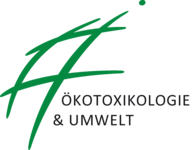Infochemicals Influence Neonicotinoid Toxicity-Impact in Leaf Consumption, Growth, and Predation of the AmphipodGammarus fossarum
ENVIRONMENTAL TOXICOLOGY AND CHEMISTRY. Bd. 39. H. 9. 2020 S. 1755 - 1764
Erscheinungsjahr: 2020
ISBN/ISSN: 0730-7268
Publikationstyp: Zeitschriftenaufsatz
Doi/URN: 10.1002/etc.4802
| Geprüft | Bibliothek |
Inhaltszusammenfassung
Infochemicals act as inter- or intraspecific messengers. The literature suggests complex interactions between infochemicals (mainly predator cues) and chemical (e.g., pesticide) effects, with their direction and magnitude depending on the cue origin, pesticide identity, and test species. With the present study we assessed the impact of alarm cues alone and in combination with the neonicotinoid insecticide thiacloprid on leaf consumption, predation onBaetisnymphs, and dry weight of the amphipo...Infochemicals act as inter- or intraspecific messengers. The literature suggests complex interactions between infochemicals (mainly predator cues) and chemical (e.g., pesticide) effects, with their direction and magnitude depending on the cue origin, pesticide identity, and test species. With the present study we assessed the impact of alarm cues alone and in combination with the neonicotinoid insecticide thiacloprid on leaf consumption, predation onBaetisnymphs, and dry weight of the amphipodGammarus fossarum. Alarm cues (ground gammarids) and thiacloprid alone decreased gammarid leaf consumption with increasing intensities. At a defined alarm cue intensity, which alone did not cause a significant reduction in gammarid feeding, thiacloprid-induced feeding effects were additive. During an experiment targeting gammarid predation onBaetisnymphs (120 h), thiacloprid and alarm cues alone did increase and reduce predation significantly, respectively. Moreover, alarm cues led to a lower final gammarid dry weight. However, alarm cues did not affect response variables during a second predation experiment performed at a higher thiacloprid concentration (2 vs 0.75 mu g/L). This discrepancy in alarm cue effects highlights either a varying susceptibility of the test species to these cues among experiments or that cue quality is fluctuating. Thus, the present study highlights a considerable variability in the individual and interactive effects of infochemicals and chemical stressors on aquatic biota, an insight relevant in the assessment of multiple stressors.Environ Toxicol Chem2020;00:1-10. (c) 2020 The Authors.Environmental Toxicology and Chemistrypublished by Wiley Periodicals LLC on behalf of SETAC. » weiterlesen» einklappen
Autoren
Verknüpfte Personen
- Ralf Schulz
- Mitarbeiter/in
(Institut für Umweltwissenschaften Landau)
- Mirco Bundschuh
- Mitarbeiter/in
(Institut für Umweltwissenschaften Landau)

